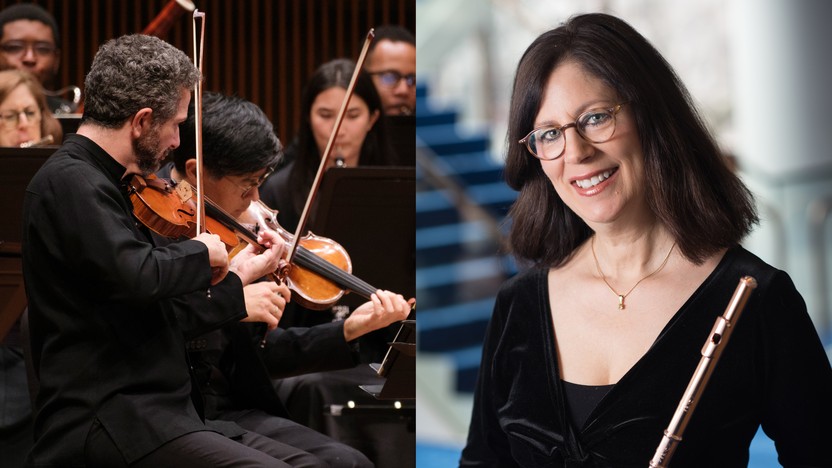Beethoven’s Razumovsky Quartet No.3

Sponsored By
- November 17, 2019


Sponsored By

Donizetti was 19 and just finishing his composition studies when he composed this Sinfonia for Winds. A year later his first opera reached the stage in Venice, setting him on a course to become one of Italy’s great stage composers, known for his use of florid vocal displays in the bel canto style that bridged the accomplishments of Rossini before him and Verdi after.
This early sinfonia (i.e. overture) shows the formal grounding in harmony and structure that served Donizetti so well as he pushed toward musical extremes in places like the famous “mad scene” from his opera Lucia di Lammermoor. One crisp phrase in an andante tempo serves as an introduction, and then the fast body of the movement embarks on a typical sonata form, playing with the contrast between the home key of G minor and a contrasting major key. The scoring reflects a festive approach to woodwind music that was particularly popular in German speaking lands, perhaps stemming from the influence of Donizetti’s teacher and champion, Johannes Simon Mayr, who hailed from Bavaria.
Aaron Grad ©2019

When the young Beethoven published his first six string quartets in 1800, he was still working under the long shadow of Joseph Haydn. After those early years spent mastering the established style, Beethoven attained a new level of refinement and independence with the works from his “middle period,” including five string quartets. The first three, composed in 1806 and published together as Opus 59 in 1808, are still known by the name of the man who commissioned them: Count Andreas Razumovsky, a Russian ambassador. The Third “Razumovsky” Quartet begins with a pungent dissonance that initiates a slow and despairing introduction, setting up a stark contrast with the fast body of the movement in C major. The slow second movement creates its own somber mood by moving to the relative minor key and developing folk-like melodies over pulsing plucks from the cello. The Menuetto retakes the home key of C major, and its smooth slurs and fluid sixteenth-notes help achieve the grazioso (“graceful”) quality indicated in the tempo marking. In the finale, the viola leads off with an extremely fast and restless theme that becomes the basis of a whirlwind fugue.
Aaron Grad ©2019

While in Mannheim in 1778 on a jobhunting expedition, Mozart secured a commission to compose concertos and quartets for Ferdinand Dejean, an amateur flutist who worked for the Dutch East India Trading Company. Mozart might have composed this andante as a replacement slow movement for the Flute Concerto in G he wrote for Dejean, or it might have been intended for a new concerto he never finished. The graceful, ornamented melody treats the flute like a soprano in a wordless aria.
Aaron Grad ©2019

When the young Beethoven published his first six string quartets in 1800, he was still working under the long shadow of Joseph Haydn. After those early years spent mastering the established style, Beethoven attained a new level of refinement and independence with the works from his “middle period,” including five string quartets. The first three, composed in 1806 and published together as Opus 59 in 1808, are still known by the name of the man who commissioned them: Count Andreas Razumovsky, a Russian ambassador. The Third “Razumovsky” Quartet begins with a pungent dissonance that initiates a slow and despairing introduction, setting up a stark contrast with the fast body of the movement in C major. The slow second movement creates its own somber mood by moving to the relative minor key and developing folk-like melodies over pulsing plucks from the cello. The Menuetto retakes the home key of C major, and its smooth slurs and fluid sixteenth-notes help achieve the grazioso (“graceful”) quality indicated in the tempo marking. In the finale, the viola leads off with an extremely fast and restless theme that becomes the basis of a whirlwind fugue.
Aaron Grad ©2019
Get driving directions and find nearby parking.
Find dining options close to the venue.
View seating charts to find out where you'll be seating.
Get driving directions and find nearby parking.
Find dining options close to the venue.
View seating charts to find out where you'll be seating.
